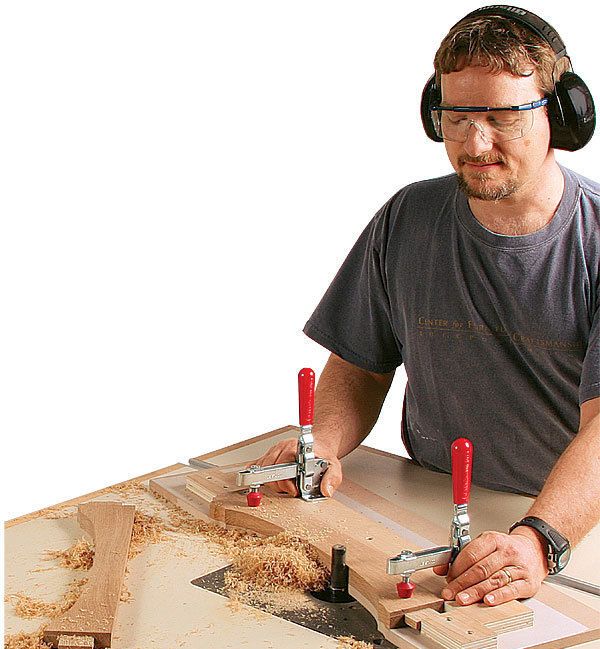5 Essential Jigs for the Router Table
Great fixtures and fences offer better control and new possibilities
Synopsis: Whether or not you built the Rock-Solid Router Table that Peter Schlebecker designed (FWW #195), you’ll benefit from making some or all of these router-table jigs. Simple and easy to use, these five jigs and fixtures will help you repeat shapes consistently, make stopped cuts in angled workpieces, safely profile narrow stock, edge-joint veneers, and generally work more precisely and safely. Schlebecker’s jigs include a featherboard, a pattern-routing jig, a zero-clearance fence, a miter angle sled and a jig for edge-jointing stacks of veneer.
In a recent article, I wrote about the router table I built for the Center for Furniture Craftsmanship, the school where I teach and manage the facilities. The primary goals of the design were sturdiness and a tabletop big enough to handle a wide array of workpieces and jigs. That article was about making the table; this one is about the accessories that go with it.
Easy to make and use, these five jigs and fixtures are some of the most useful router-table jigs at the school. With them, we repeat shapes consistently, quickly, and precisely. We make stopped cuts in angled workpieces, creating invisible and strong joinery. Profiling narrow stock is easier and safer. Edge-jointing a stack of veneers can be done effortlessly.
Of course, if you don’t have a router table like mine, you still can use these jigs. But if your table surface is small, you may have to scale down the jigs accordingly.
1 Featherboard – Manage Small and Narrow Workpieces
Also called a finger board, this simple fixture holds a workpiece firmly against the table surface while a cut is made. It is particularly important to use if the workpiece is very narrow and there is a risk of getting your fingers too close to the blade. I use a featherboard for a pencil bead or for any other small molding, such as the slightly curved profile on dozens of pieces for a tambour door.
The configuration that works best for the router table is a long piece of ¾ -in. plywood that is about the same length as the routertable fence, with feathers cut on both sides around a notch for the bit. Plywood is strong in every direction, so it allows you to orient the feathers along the side of this long board. Lay out pencil lines at 45° with ¼ -in. spacing, and then cut the feathers on the bandsaw.
From Fine Woodworking #200
For the full article, download the PDF below:
Fine Woodworking Recommended Products

Estwing Dead-Blow Mallet

Veritas Wheel Marking Gauge

Incra Miter 1000HD























Log in or create an account to post a comment.
Sign up Log in